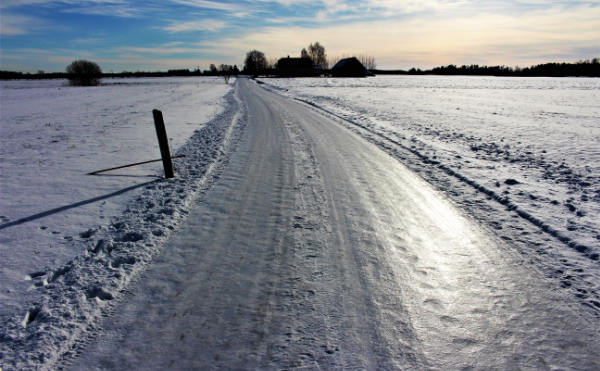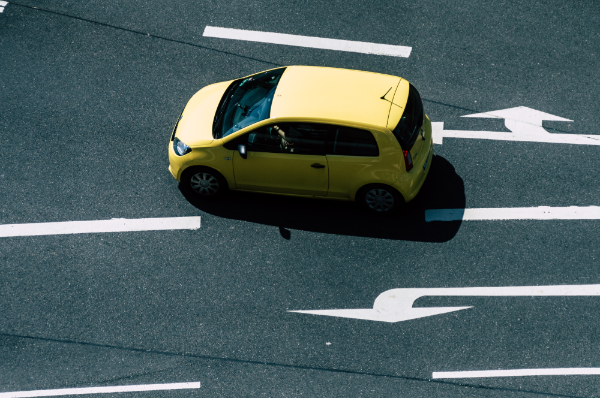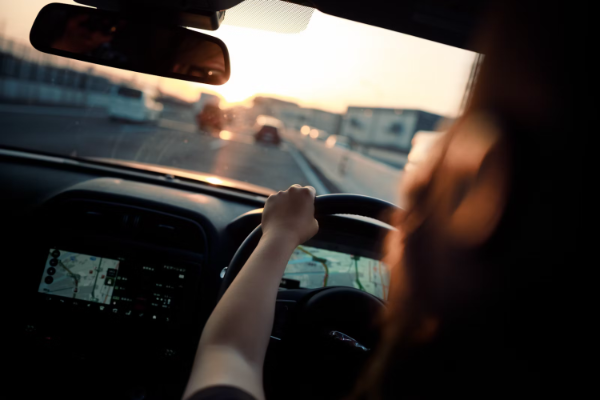Lessons The Hazard Drill
Introduction
You should by now be able to move off, steer, change gear and stop. These skills form the basis of most of the skills you will require. This page covers the basic routine or drill that you will use whenever you negotiate a driving hazard such as a junction.
The Highway Code calls this routine the hazard drill. This drill is based upon the Mirror-Signal-Manoeuvre routine and is taught to learners in order to provide a more controlled way to plan the obstacles ahead. You will be taught how to use this drill for dealing with simple junctions and other basic road hazards.
On The Road Hazards
The term "Hazards" implies a sense of danger and this may well be true in some cases. The Highway Code, however, defines a hazard quite simply as anything that will make you alter your speed, position or direction.
Some hazards are fixed or permanent. Junctions, bends in the roads, traffic lights etc. are permanent fixtures and local knowledge can assist with planning these hazards. Some hazards are temporary, however (parked cars, cyclists, road works), and no amount of local knowledge can prepare you for what is around a blind corner. Only by having a planned approach will you safely deal with these situations.

Hazard Drill (M-S-P-S-G-L)
Each time you are presented with a potential or actual hazard on the road (i.e. anything that may require you to have to change speed, position or direction) you should go through the following hazard drill one or more times. While each step of the drill needs to be considered it need not necessarily be acted upon.
- Mirrors:
Use your interior mirror and wing (side) mirrors early. Mirrors should always be checked in pairs to provide a complete picture of what is happening to the rear and side of you. Glance into your right and left blind spots as appropriate.
- Signal:
Make sure that you give the correct signal, in good time and so as not to mislead others. People should be able to see your signal, understand it and be able to respond to it.
- Position:
Determine the best position/course to negotiate the hazard. Think before you change position; be careful not to mislead others. When moving to the right ensure that you will not unnecessarily block the path of oncoming vehicles.
- Speed:
Adjust your speed so that you can negotiate the hazard ahead and stop within the distance you can see to be clear.
- Gear:
Select the gear to match the speed and power you need. Make sure that the gear is selected before the hazard is negotiated and the clutch is raised to avoid coasting. Coasting is particularly dangerous as, because there is no connection between the engine, gears and road wheels when the clutch is pressed, you do not have full control of the vehicle by way of engine-braking or acceleration. The vehicle is also likely to pick up speed when coasting.
- Look:
Continue to look ahead, assessing the hazard. Although this step is the final stage of the routine you should actually be looking and assessing the situation at all times.
Please note, it is not always possible to carry out the routine in the exact order shown (for instance, when going downhill it may make more sense to adjust speed before giving a signal), but the mirrors should always be checked first.

Approaching Junctions To Turn Left or Right
Key points to remember:
- Signals & Positions
- Pedestrians & Priorities
When turning left or right you must give way to any pedestrians who are already crossing the junction. Stop before you start to turn. It can be very intimidating to a pedestrian when a car is turning toward them!
When turning left you have priority over oncoming traffic turning right into the side road. However, when you are turning right oncoming traffic has priority over you so you must wait for a gap in the traffic. Wait just before the point at which you would turn. Try to time your approach to coincide with any oncoming gaps that are of a suitable size to allow you to cross.
If you do have to stop, stop just before the point where you would start to turn and select first gear and be ready to move. Apply your handbrake if you have anything more than a pause. Look ahead for a gap and get ready to move as it approaches; check your mirrors and then turn if it is safe to do so.
When turning left make sure you check the left hand door mirror again just before turning. When turning right check the right hand door mirror.
When turning left you would normally position your car as close to the left as it was safe to do so but not too close that you cut the corner. Do not overtake any cyclists, motorcyclists or horse riders immediately before turning. When turning right you would normally position the vehicle just left of the centre of the road (or in the area of the road marked for right turning traffic) provided sufficient room was available for oncoming vehicles to pass safely; otherwise you would keep to the left.
As you reduce speed to turn, assess which gear you should select to complete the turn. You should reduce speed until you are certain that you can safely negotiate the turn; then at that point select the gear that matches your speed.
Approaching Junctions Emerging From A Side Road
The approach routine is the same when you want to emerge from a side road. However, extra care should be given before you emerge into the major road. In particular, vehicles on the major road have priority over you therefore you may need to slow down or stop to allow them to pass before you emerge.

